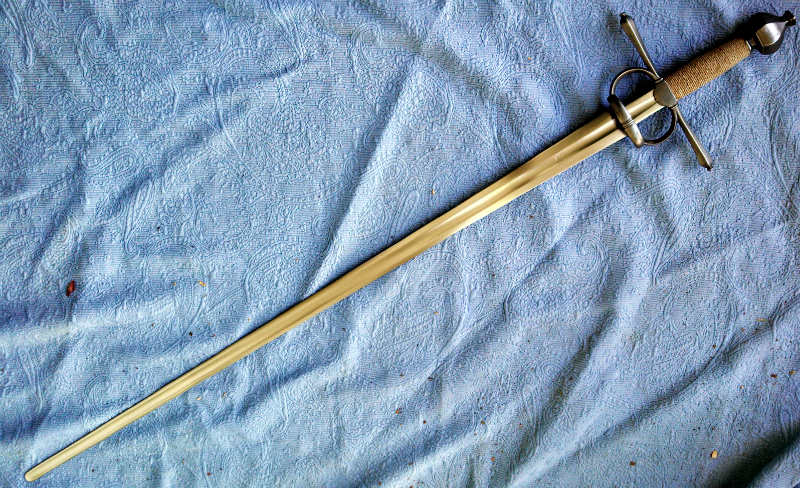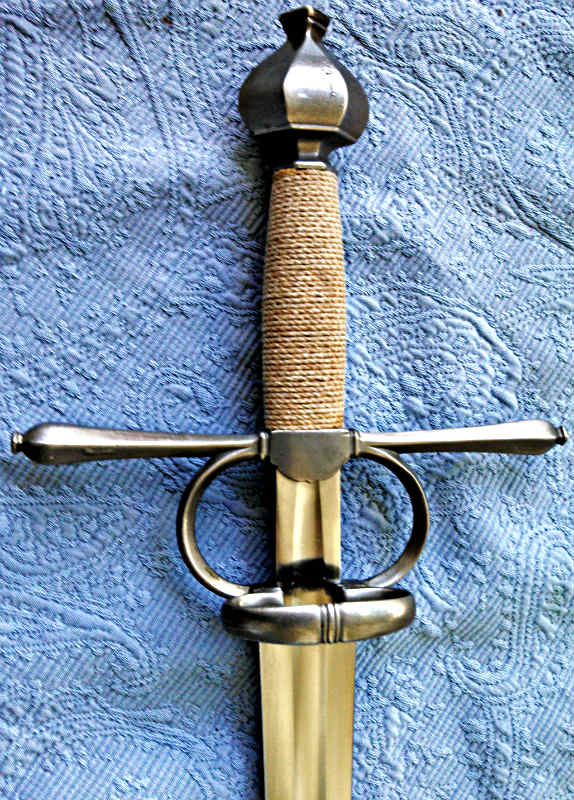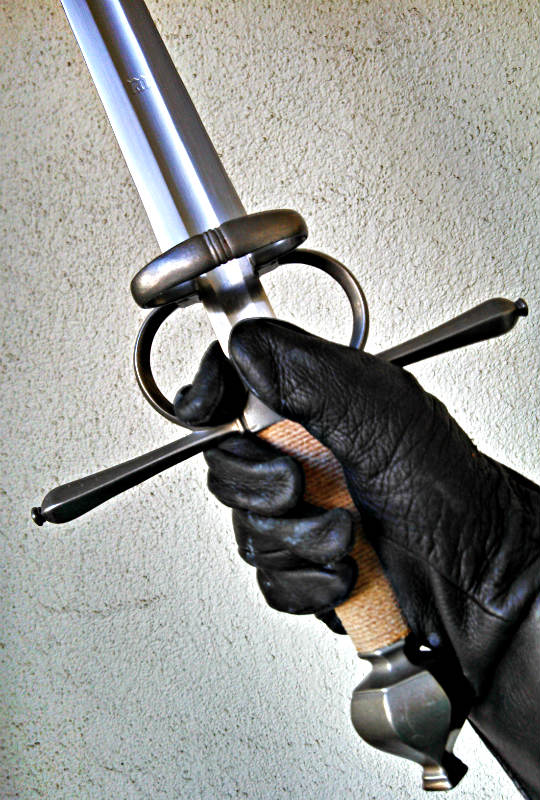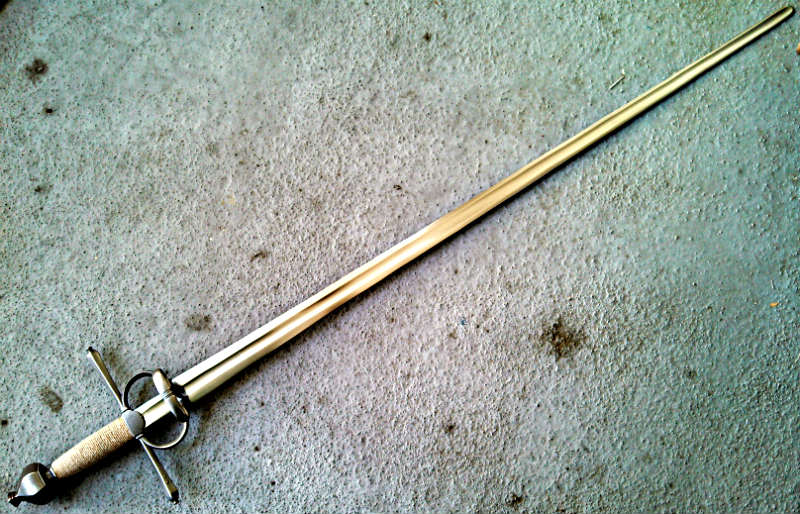Up front, to satisfy our obsession with specifications - (in inches):
Overall Length – 44
Blade Length (includes Ricasso) – 37.5
Ricasso Length - 2
Grip Length – 3.625
Guard Width – 8.188
Blade Width –
Ricasso -.938
Just Below Ricasso – 1.5
Midpoint – 1
2 inches before tip - .635
Blade Thickness –
Ricasso - .250
Just Below Ricasso - .250
Down 9 inches from guard - .195
Down 18.5 inches from Guard - .154
Down 27 inches from Guard - .120
2 inches from tip .098
--61% total Distal Taper--
COG - 4.375
COP – 25 (not that I’ll be cutting anything with it)
Weight (from Albion) – 2.5 lbs.
This is classified as a reenactment/stage combat sword – I hope to use it the second capacity. It has rolled edges which should protect it from too much nicking. I measured them at 3mm, though I may not have been doing it correctly.
The bottom half (foible?) of the blade has some flex to it. The forte is pretty stiff. This is good for stage combat, since an inadvertent full thrust hit will hopefully flex enough to prevent broken bones, etc. There was some criticism of some of the prototype versions of this model, that the blade had too much flex, and that it was too whippy. That problem has been solved – not whippy anymore, though this may not satisfy those that want a blade stiff from guard to tip.
The sword weighs 2.5 lbs, but is no lightweight. It definitely does not feel like a modern fencing sword – it has a lot more bottom to it. The width starts out a 1.5 inches, wider that many rapiers – it is certainly a cut and thrust type side sword, though the blade may be longer than most of that kind. The broad, blade-length fuller and the 61% distal taper help to make the sword very maneuverable and easy to wield. One of the reasons that much taper works so well, may be that it starts out at .250, thicker than most other blades. The design of this model is a series of compromises. On the one hand, you want to make it look and handle as much like a real sword as you can – On the other, you need to make it strong, durable, and safe. Many blunts are either not strong enough, or end up being almost like crowbars. Albion has achieved an admirable balance here.
Some minor points against it –
1) It has that ugly beige Maestro grip – functional, but unaesthetic to the max.
2) The hilt is made of some variety of stainless steel. That’s no problem for me, but, like all Maestros, the finish is a little rough. There are some minor imperfections to be seen. Of course, a better finish and grip would have raised the price, already high for a reenactment sword.
3) For me at least, the blade is about 4 inches too long for a side sword. That won’t be a problem for many.
Though I haven’t yet put it to the test, I can safely say that the Marozzo, and all the other Maestros are at the top of the heap, with only the A&A practice models in contention with them. It’s a great looking and functional (for its purpose) sword, and I hope to start using it soon.






